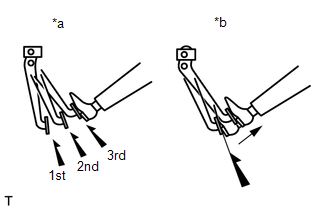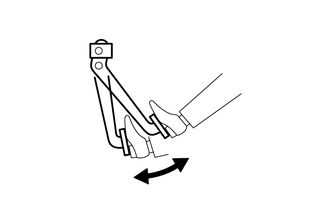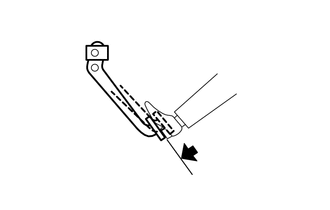Toyota 4Runner: On-vehicle Inspection
ON-VEHICLE INSPECTION
PROCEDURE
1. INSPECT BRAKE BOOSTER ASSEMBLY
(a) Airtightness check
|
(1) Start the engine and stop it after 1 or 2 minutes. Slowly depress the brake pedal several times. If the pedal can be depressed to the floor the first time, but on the 2nd and 3rd times cannot be depressed as far, the booster is airtight. Text in Illustration
|
|
(2) Depress the brake pedal while the engine is running and stop the engine with the brake pedal depressed.
If there is no change in the pedal reserve distance while holding the pedal for 30 seconds, the booster is airtight.
(b) Operation check
|
(1) Depress the brake pedal several times with the ignition switch off and check that there is no change in the pedal reserve distance when the pedal is depressed. |
|
|
(2) Depress and hold down the pedal and start the engine. If the pedal goes down slightly, operation is normal. |
|
 Components
Components
COMPONENTS
ILLUSTRATION
...
 Removal
Removal
REMOVAL
CAUTION / NOTICE / HINT
NOTICE:
Make sure to release the vacuum from the brake booster before removing the master
cylinder from the brake booster.
PROCEDURE
1. DRAIN BRAKE FLUID
NOTICE ...
Other materials about Toyota 4Runner:
Reassembly
REASSEMBLY
PROCEDURE
1. INSTALL FRONT UPPER BALL JOINT DUST COVER LH
(a) Pack the upper arm ball joint with MP grease.
Grease capacity:
8.0 g (0.282 oz.)
Text in Illustration
*1
MP Grease
...
Zero Point Calibration of Yaw Rate Sensor Undone (C1210,C1336)
DESCRIPTION
The skid control ECU receives signals from the yaw rate and acceleration sensor
via the CAN communication system.
The yaw rate sensor has a built-in acceleration sensor and detects the vehicle's
condition using 2 circuits (GL1, GL2). If t ...
0.0208



